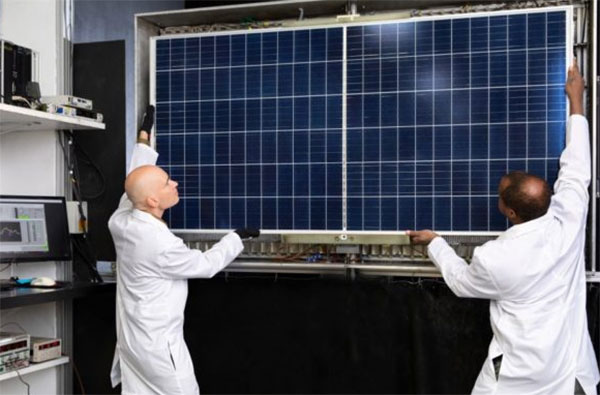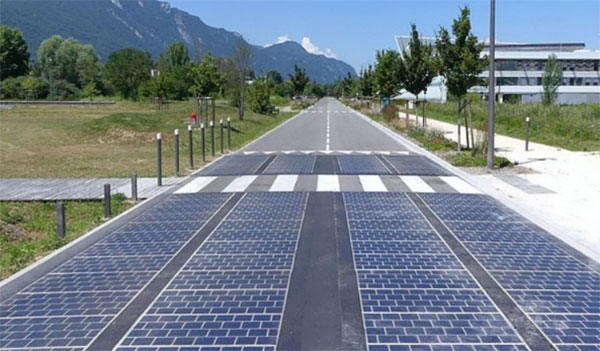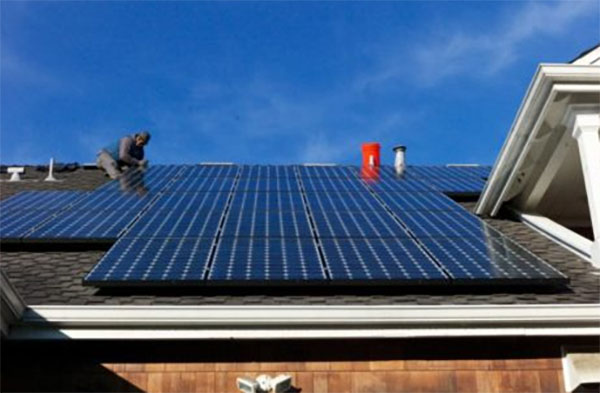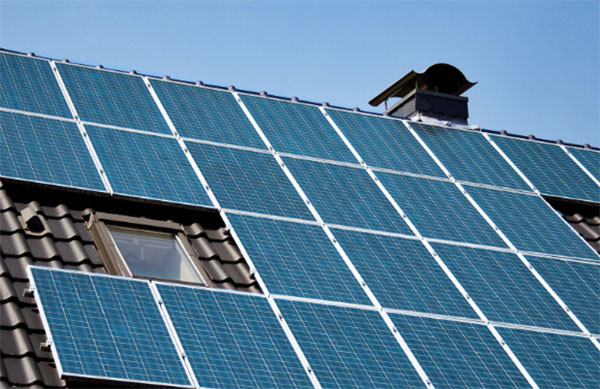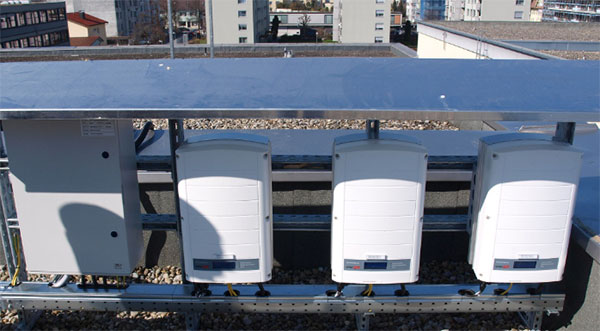Description
Understanding Solar Panel Failure
Definition of Failure in Solar Panels
Failure in solar panels refers to any condition that significantly degrades their performance below a certain threshold, typically below 80% of their nominal power output. Failure can result from a wide range of physical, chemical, and electrical issues, including but not limited to microcracks in solar cells, delamination of layers, corrosion of metal contacts, and malfunction of bypass diodes.Common Types of Failures
Solar panel failures are broadly categorized into manufacturing defects, wear and tear over time, and external factors such as environmental damage. Manufacturing defects might include poor soldering, inadequate encapsulation, and flaws in the solar cells themselves. Wear and tear refer to the gradual degradation of materials under exposure to UV light, temperature cycles, and mechanical stress. Environmental damage can be caused by wind, hail, or heavy snow loads, leading to physical damage to the panels. Key Factors Influencing Failure Rates Several factors significantly influence the failure rates of solar panels:- Material Quality: High-quality materials such as top-grade silicon and robust encapsulation layers can drastically reduce failure rates. Panels made from lower-grade materials may show failure rates of up to 10% over their lifetime, while those made from high-grade materials often have failure rates below 1%.
- Installation and Maintenance: Proper installation and regular maintenance can prevent many common failures. Incorrect installation can lead to mechanical stress and water ingress, while lack of maintenance can allow for the accumulation of dirt and debris, which reduces efficiency.
- Environmental Conditions: Solar panels in areas with extreme weather conditions, such as high winds, hail, or significant temperature fluctuations, may experience higher failure rates. For instance, panels in desert regions might face failure rates 1.5 times higher than those in temperate climates due to extreme temperature variations and sand abrasion.
Statistical Overview of Solar Panel Failures
Global Failure Rate Statistics
The global failure rate of solar panels is an essential metric for investors, manufacturers, and users alike. Studies show that the average failure rate stands at approximately 0.05% per year, indicating a high level of reliability across the industry. This translates to an expected lifespan of 20 to 25 years for most solar panel models, with a significant portion exceeding this range, contingent upon factors such as maintenance, installation quality, and environmental conditions.Comparison by Solar Panel Types
Solar panels come in various types, each with unique characteristics and failure rates. Monocrystalline solar panels, known for their efficiency and longevity, exhibit a lower failure rate of about 0.03%, attributed to their high-quality silicon. Polycrystalline solar panels, while more affordable, show a slightly higher failure rate of 0.07% due to the variation in silicon quality. Thin-film solar panels, offering versatility and a lower cost, have the highest failure rate among the three, pegged at 0.1%, a reflection of their less durable nature. The impact of material quality on solar panel performance cannot be overstated. For instance, the use of high-purity silicon in monocrystalline solar panels not only enhances their efficiency but also contributes to their durability, a critical factor in minimizing failure rates.Trends Over Time
Over the past decade, the solar industry has seen a remarkable improvement in the quality and reliability of solar panels. Advances in technology and manufacturing processes have led to a decrease in failure rates, from an average of 0.8% in the early 2000s to the current 0.05%. This trend is a testament to the industry's commitment to enhancing solar panel technology, making it a more viable and sustainable energy source. The evolution of solar panel technology has been marked by significant milestones, including the introduction of anti-reflective coatings and improved encapsulation materials. These innovations have directly contributed to the extended lifespans and reduced failure rates of modern solar panels.Impact of Environmental Conditions
Environmental conditions play a crucial role in the performance and longevity of solar panels. Understanding how different factors such as temperature, humidity, and physical stressors affect solar panels can help in optimizing their efficiency and durability.Effect of Temperature Extremes
Solar panels are designed to operate within a specific temperature range. Deviations from this range can significantly affect their performance and lifespan.- High Temperatures: Solar panels convert sunlight into electricity more efficiently at cooler temperatures. As the temperature rises, the efficiency of a solar panel decreases. For example, a panel operating at 25°C (77°F) might have an efficiency of 20%, but at 50°C (122°F), the efficiency could drop to 16% or lower. This reduction in efficiency can lead to a decrease in power output and, consequently, lower electricity generation.
- Low Temperatures: While solar panels can perform better in cooler conditions, extremely low temperatures can also pose risks. The materials used in solar panels can contract in cold weather, potentially causing micro-cracks in the solar cells. These micro-cracks can reduce the panel's overall efficiency and lifespan.
Impact of Humidity and Water Exposure
Moisture can severely impact solar panels, particularly in areas with high humidity or frequent rain.- Humidity: High levels of humidity can lead to moisture ingress, affecting the panel's electrical components and potentially leading to short circuits. Consistent exposure to high humidity can degrade protective coatings and sealants, increasing the risk of damage over time.
- Water Exposure: Although solar panels are designed to be waterproof, persistent or heavy rain can test the limits of their design. Water can seep into cracks or poorly sealed edges, causing corrosion of metal components or the breakdown of electrical insulation.
Damage from Wind, Hail, and Other Physical Stressors
Physical stressors such as wind and hail can cause immediate and visible damage to solar panels.- Wind: High winds can stress the mounting and framing system of solar panels, leading to structural damage or, in extreme cases, detachment from their mounting. Proper installation and regular maintenance are crucial to withstand high wind conditions.
- Hail: Solar panels are tested for hail resistance, but unusually large hailstones can still cause damage. Impacts from hail can create micro-cracks in the solar cells, reducing the panel's efficiency and lifespan.
- Other Stressors: Other physical stressors include falling debris, such as branches from trees, which can scratch or even penetrate the surface of the panel, leading to a loss in efficiency and potential failure.
Mitigation and Prevention Strategies
Mitigating and preventing failures in solar panels is essential for enhancing their efficiency, lifespan, and overall value. This involves a multifaceted approach that encompasses manufacturing quality control, best practices in installation and maintenance, and the integration of technological innovations.Manufacturing Quality Control
Quality control during the manufacturing process is crucial for minimizing the risk of failures in solar panels. This includes:- Material Selection: Using high-quality materials is vital for the durability and performance of solar panels. For instance, silicon used in solar cells should have high purity levels to ensure maximum efficiency.
- Production Processes: Advanced production techniques, such as automated soldering and precision cell positioning, help in reducing human error and ensuring consistency across panels.
- Testing and Certification: Each panel should undergo rigorous testing for performance under various conditions, such as extreme temperatures, humidity, and physical stress tests. Certifications from recognized standards (e.g., IEC 61215 for crystalline silicon panels) serve as a benchmark for quality and reliability.
Installation and Maintenance Best Practices
Proper installation and regular maintenance are key to the longevity and efficiency of solar panels.- Professional Installation: Ensuring that panels are installed by certified professionals can prevent many issues related to poor installation, such as improper angling or insecure mounting, which can affect performance and durability.
- Regular Inspections: Conducting periodic inspections can help identify and address potential issues before they lead to failures. This includes checking for physical damage, ensuring connections are tight, and cleaning panels to maintain optimal performance.
- Preventive Maintenance: Implementing a preventive maintenance schedule can extend the life of solar panels. This may involve replacing worn-out components, updating software in smart systems, and repairing any minor damages promptly.
Technological Innovations to Reduce Failures
Incorporating technological advancements can significantly reduce the failure rates of solar panels.- Self-Cleaning Coatings: These coatings can reduce the accumulation of dust and debris, maintaining efficiency without the need for frequent manual cleaning.
- Smart Monitoring Systems: These systems can detect and diagnose issues in real-time, allowing for quick response to prevent damage or degradation.
- Enhanced Durability Designs: Innovations in panel design, such as frameless modules or reinforced glass, can improve resistance to physical stressors like wind and hail.

